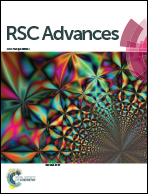Assembling sulfur spheres on carbon fiber with graphene coated hybrid bulk electrodes for lithium sulfur batteries†
Abstract
A hybrid bulk electrode coated with sulfur spheres and graphene has been assembled via a two-step electrochemical deposition for the first time. Close-packed and layer-by-layer sulfur spheres were successfully deposited on the carbon fiber paper. The flexible bulk electrode is based on carbon fiber paper that is highly conductive and robust toward electrochemical cycling. When evaluated as a potential cathode for lithium sulfur (Li–S) batteries, such electrodes exhibit fine lithium storage capabilities by virtue of their advantageous structural features.


 Please wait while we load your content...
Please wait while we load your content...